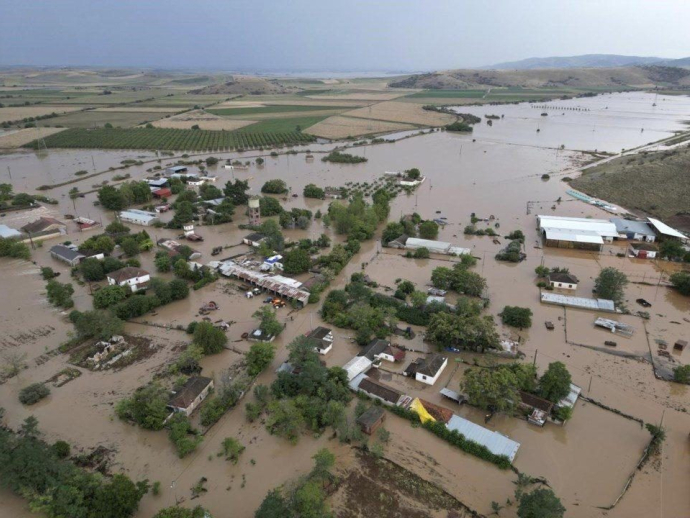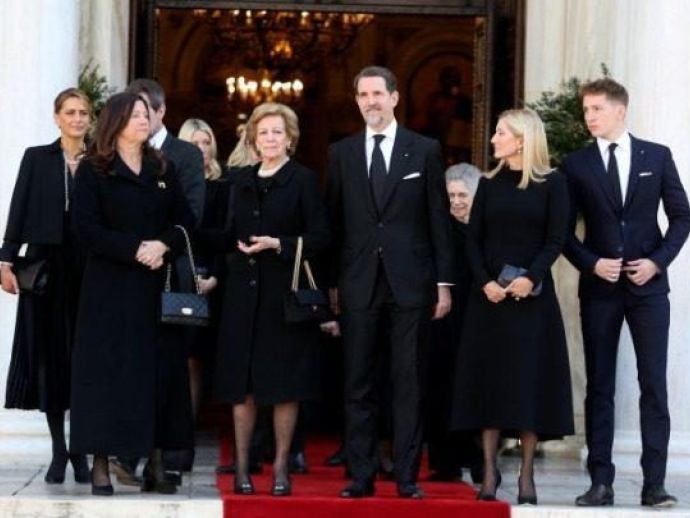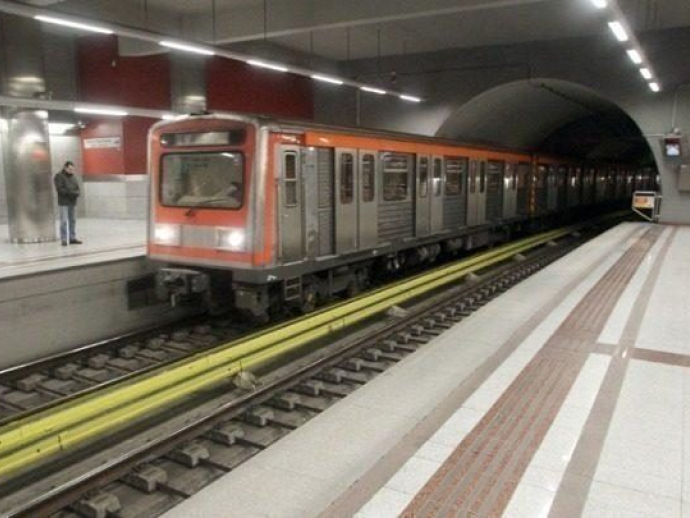Huge search seeks survivors of migrant boat sinking off Greece; hundreds feared missing
The vessel wobbled sharply, flooded and capsized. Less than 15 minutes later, it sank into one of the Mediterranean’s deepest points, off the coast of Greece. Hundreds of people are thought to have been on board when the boat went down Wednesday, although authorities have no precise figure.
Rescuers saved 104 passengers — including Egyptians, Syrians, Pakistanis, Afghans and Palestinians — and recovered 79 bodies. And the search went on early Thursday for more, with aircraft dropping flares to help search teams.
“It’s one of the biggest (such) operations ever in the Mediterranean,” Greek coast guard spokesman Nikos Alexiou told state ERT TV. “We won’t stop looking.”
The sinking could be one of the worst ever recorded on the feared central Mediterranean migration route, which is the world’s deadliest.
Ioannis Zafiropoulos, deputy mayor of the southern port city of Kalamata, where survivors were taken, said his information indicated there were “more than 500 people” on board.
The 25- to 30-meter (80- to 100-foot) boat is believed to have left the Tobruk area in Libya, which was plunged into chaos following the 2011 uprising that toppled and killed longtime autocrat Moammar Gadhafi. The instability allowed migrant smugglers to make Libya one of the main departure points for people seeking a better life in Europe.
Migration experts linked the sinking with the European Union’s failure to provide safe immigration alternatives for people fleeing conflict or hardship in the Middle East and Africa.
“We are witnessing one of the biggest tragedies in the Mediterranean, and the numbers announced by the authorities are devastating,” said Gianluca Rocco, head of the Greek section of IOM, the U.N. migration agency.
“This situation reinforces the urgency for concrete, comprehensive action from states to save lives at sea and reduce perilous journeys by expanding safe and regular pathways to migration,” Rocco said.
The IOM has recorded more than 21,000 deaths and disappearances in the central Mediterranean since 2014.
EU Home Affairs Commissioner Ylva Johansson said the bloc has “a collective moral duty” to dismantle migrant smuggling networks.
“The best way to ensure safety of migrants is to prevent these catastrophic journeys and invest in legal pathways,” she wrote on Twitter.
Greece’s coast guard said it was notified by Italian authorities of the trawler’s presence in international waters. It said in a statement that efforts by its own ships and merchant vessels to assist the boat were repeatedly rebuffed, with people on board insisting they wanted to continue to Italy.
“They categorically refused any help,” Alexiou said.
An aerial photograph of the vessel released by the coast guard showed scores of people covering practically every inch of deck. Greek media reports, which said the ship had been at sea for least two days, voiced fears that women and children may have been trapped in the hold.
“The outer deck was full of people, and we presume that the interior (of the vessel) would also have been full,” Alexiou said. “It looks as if there was a shift among the people who were crammed on board, and it capsized.”
The spot is close to the deepest part of the Mediterranean Sea, and depths of up to 17,000 feet (5,200 meters) could hamper any effort to locate a sunken vessel.
Greece’s caretaker prime minister, Ioannis Sarmas, declared three days of national mourning.
Thirty survivors ranging in age from 16 to 49 were hospitalized with hypothermia or fever.
At the port of Kalamata, around 70 exhausted survivors bedded down in sleeping bags and blankets provided by rescuers in a large warehouse, while paramedics set up tents outside for anyone who needed first aid.
Rescue volunteer Constantinos Vlachonikolos said nearly all the survivors were men.
“They were very worn out. How could they not be?” he said. Rescuers said many of the people pulled from the water couldn’t swim and were clutching debris. The coast guard said none had life jackets.
Smugglers often use unseaworthy boats crammed with as many migrants as possible — sometimes inside locked holds — for journeys that can take days. They head for Italy, which is directly across the Mediterranean from Libya and Tunisia and much closer than Greece to the Western European countries that most migrants hope to eventually reach.
In February, at least 94 people died when a wooden boat from Turkey sank off Cutro, in southern Italy, in the worst Mediterranean sinking so far this year.
The Italian coast guard first alerted Greek authorities and the EU border protection agency, Frontex, about an approaching vessel on Tuesday.
The IOM said initial reports suggested up to 400 people were aboard. A network of activists said it received a distress call from a boat in the same area whose passengers said it carried 750 people.
After that first alert, Frontex aircraft and two merchant ships spotted the boat heading north, according to the Greek coast guard, and more aircraft and ships were sent to the area.
But repeated calls to the vessel offering help were declined, the coast guard said.
“In the afternoon, a merchant vessel approached the ship and provided it with food and supplies, while the (passengers) refused any further assistance,” a statement said. A second merchant ship later offered more supplies and assistance, which were turned down, it added.
In the evening, a coast guard patrol boat reached the vessel, “but they refused any assistance and said they wanted to continue to Italy.”
The coast guard boat accompanied the migrant vessel and later headed the rescue operation.
Vincent Cochetel, an official with the U.N. refugee agency, UNHCR, implied that the migrants’ rejection of help should not have been taken at face value.
“This boat was unseaworthy & no matter what some people on board may have said, the notion of distress cannot be discussed,” he tweeted. “A robust & predictable (search and rescue) regime led by States is needed in the Central Med if we want to avoid such tragedies to repeat.”
The Mediterranean’s deadliest shipwreck in living memory occurred on April 18, 2015, when an overcrowded fishing boat collided off Libya with a freighter trying to come to its rescue. Only 28 people survived. Forensic experts concluded that there were originally 1,100 people on board.




























































































































































































































































































































































































































































































































































































































































































































































































































































































































































































































































































































































































































































































